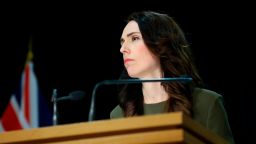Healthcare professionals work to test travelers for Covid-19 at Malpensa Airport in Somma Lombardo, Italy, on August 20.
Pier Marco Tacca/Getty Images
More than 794,000 people have died from coronavirus and there have been 22.7 million confirmed cases of Covid-19 worldwide.
In Europe – where Italy was the first Covid-19 epicenter outside China – authorities are battling to keep further waves of the pandemic at bay, but the case numbers are ticking up across the continent.
Here’s the latest:
Spain: The novel coronavirus epidemic is “out of control” in parts of Spain, according to the director of the country’s Center for Health Emergencies. “Currently the epidemic is not out of control at a national level, but it is in some concrete places,” Fernando Simon said Thursday. Simon’s remarks came after Spain reported 7,039 new cases, 3,349 in the previous 24 hours. Madrid and Catalonia account for the majority of new infections, but Andalucía, Castilla y Leon and Aragon have also seen sharp increases.
Ireland: Dara Calleary, Ireland’s Minister for agriculture, food and the marine, resigned on Friday amid a breach of Covid-19 restrictions, after he attended a golf dinner with 80 other people on Wednesday. In a radio interview this week, Calleary had urged Irish people to reduce their social contacts, insisting on the fact that “everyone had a role to play in this.” Ireland significantly tightened key restrictions this week after a spike in cases.
France: French authorities reported 4,711 new cases on Thursday, the highest daily increase since April 15. The country has seen a consistent increase in the number of new cases as restrictions were lifted and is currently reporting 46.3 new cases per 100,000 people in the past 14 days.
Italy: The country has reported a sharp rise in infections, reporting 845 new coronavirus cases on Thursday, 203 more than Wednesday, according to the latest health report. This is the highest daily increase since May 16. Despite the sharp increase, Italy’s numbers remain low compared to other European countries. According to the European Center for Disease Control, Italy has only seen 10.7 cases per 100,000 people in the past 14 days.
Croatia: A recent spike in cases has seen Croatia removed from the UK’s quarantine exemption’s list on Thursday. The country reported 255 new cases in the past 24 hours, health authorities in Croatia announced Thursday. According to the European Center for Disease Control that accounts for 41.7 cases per 100,000 people in the past 14 days. Earlier this week Croatia was?week red-listed, by Slovenia, its second largest tourist nationality, and Austria.
Poland: The country has recorded 903 new cases, its highest daily increase since the beginning of the outbreak according to a Polish Ministry for Health communications officer. 168 cases came from the Silesia mining region whereas 156 cases and 146 were respectively recorded in the Malopolska and?Mazovia regions. The numbers in Poland have been rising since August 4 when the country recorded 680 cases.
Europe’s travel windows are slamming shut: Just weeks after many countries opened their borders to travelers within the continent, some are closing again, seemingly undermining efforts to salvage the continent’s vital summer tourism economy.


















































